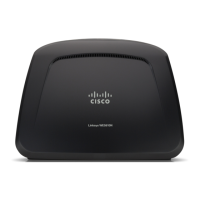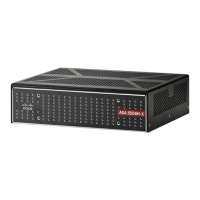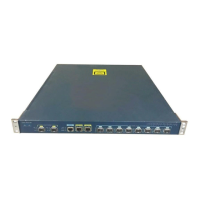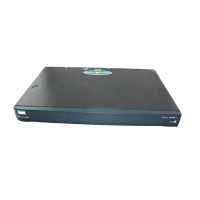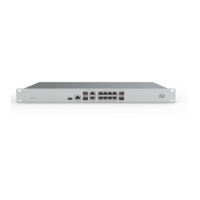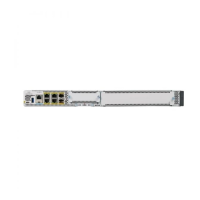Configuring VPN
Configuring SSL VPN for Browser-Based Remote Access
Cisco SA500 Series Security Appliances Administration Guide 159
7
STEP 4 In the SSL VPN Portal Pages to Display area, check the box for each SSL VPN
Portal page that users can access through this portal.
Any page that is not selected will not be visible from the SSL VPN portal
navigation menu. However, users can still access the hidden pages unless SSL
VPN access policies are created to prevent access to these pages
STEP 5 Click Apply to save your settings.
STEP 6 To view your new page, click the link in the Portal URL column of the table. This URL
also is the URL that you will provide to your users.
STEP 7 Repeat as needed to add more portal layouts.
NOTE Next step (required)
Configure the SSL VPN Users. Proceed to the next section Scenario Step 2:
Adding the SSL VPN Users.
Scenario Step 2: Adding the SSL VPN Users
Authentication of the remote SSL VPN user is done by the security appliance by
using either a local database on the security appliance or external authentication
servers (i.e. LDAP or RADIUS). The user domain determines the authentication
method (local user database, external server) to be used when validating the
remote user’s connection.
In this scenario, you add all users to the default domain and group. However, you
can create different domains and groups if you want to have different portal
layouts and different SSL VPN policies for different users. For complete details
about domains, groups, and users, as well as user policies that you can configure
see Chapter 8, “Administration.” For information about adding users, see Adding
or Editing User Settings, page 173.
STEP 1 Click Administration > Users > Users. The List of Users table appears.
The User window opens. The default Administrator and Guest users appear in the
List of Users table, along with any new users that you add.
STEP 2 To add a user, click Add.

